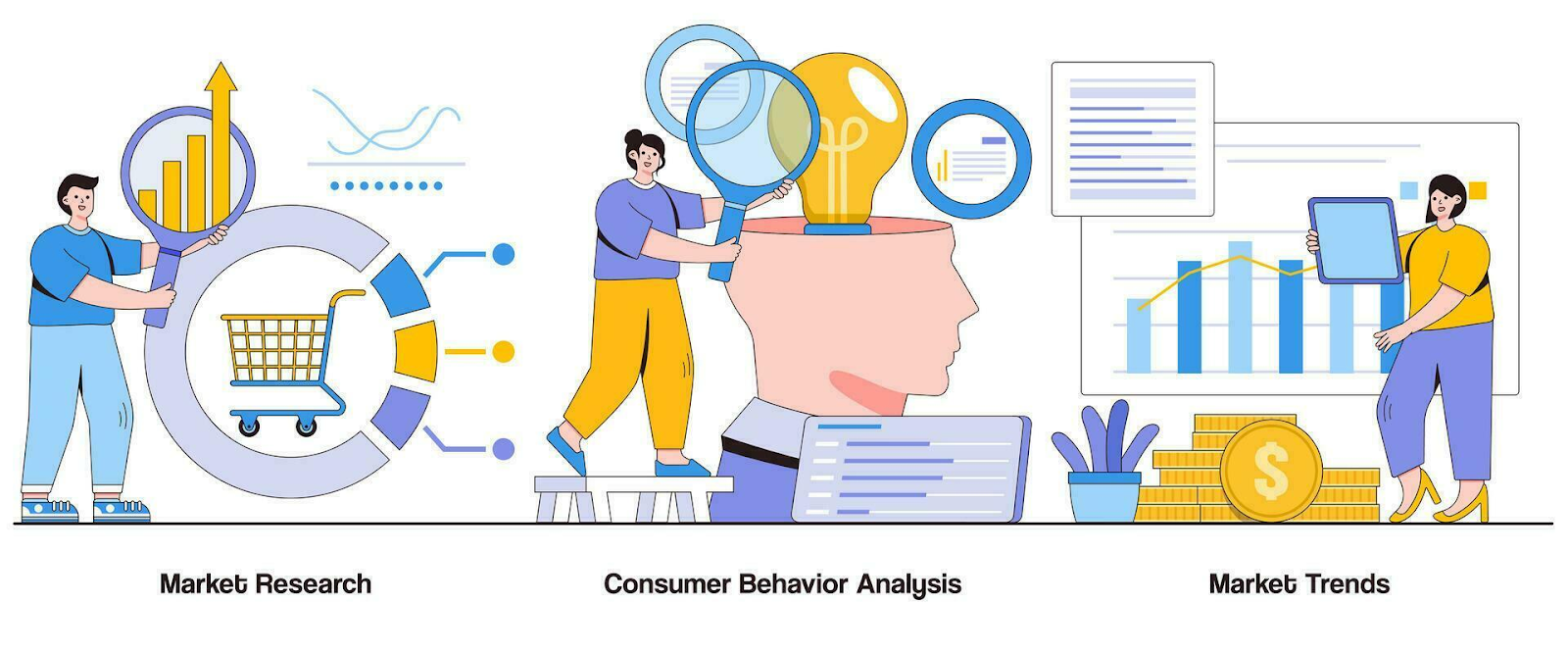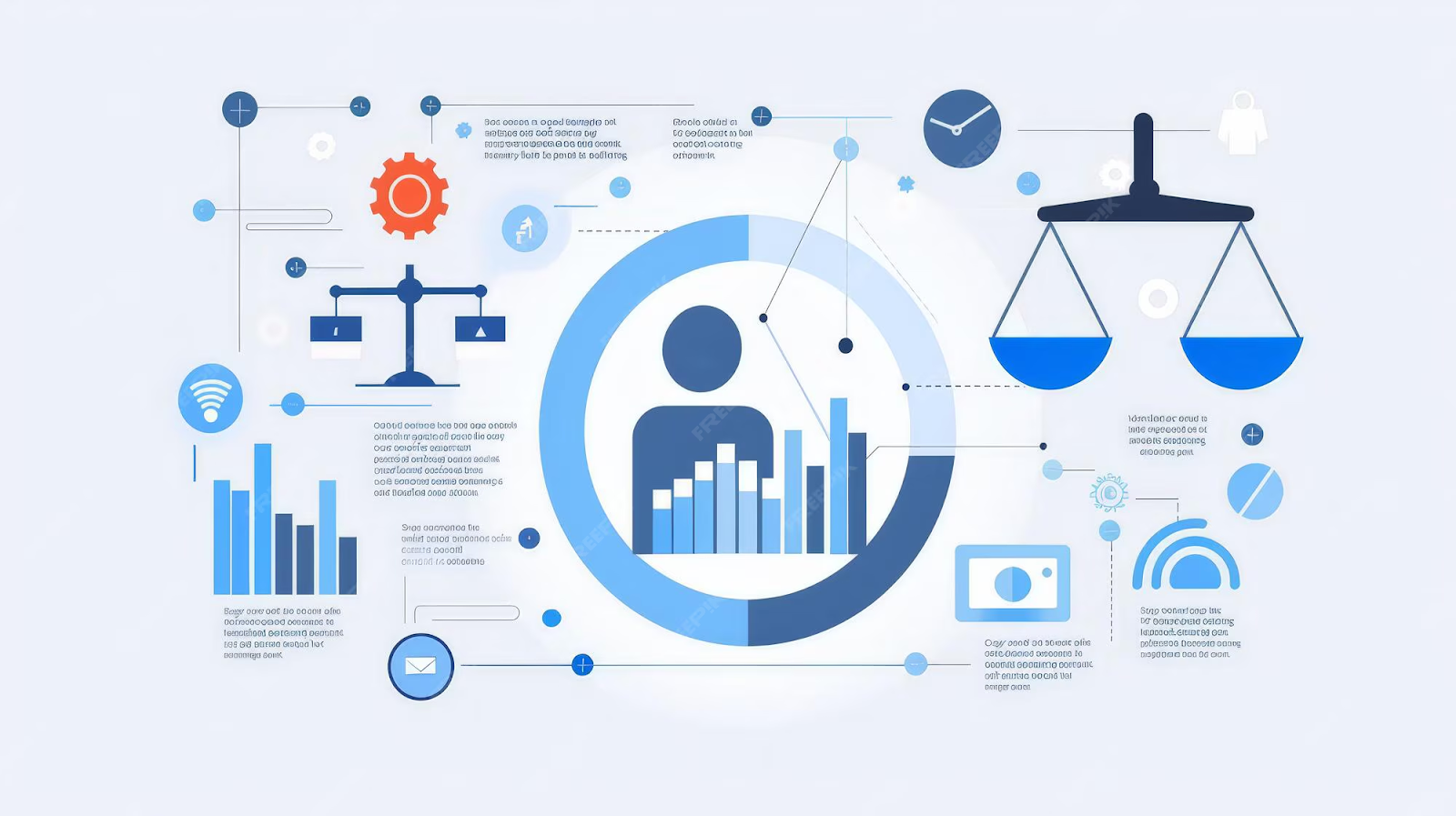Discover 10 proven ways Data-Driven Marketing transforms insights into actionable growth strategies in the AI era. Learn how predictive analytics, behavioral intelligence, and ethical data use are shaping the future of intelligent marketing.

-
Introduction: The Age of Intelligent Marketing
-
The Power of Data-Driven Marketing
-
Real-Time Marketing in the Age of AI
-
From Demographics to Predictive Personas
-
Behavioral Analytics and the New Customer Journey
-
Ethical Data Usage in Marketing
-
Conclusion: The Intelligence, Integrity, and Immediacy of Modern Marketing
Data-Driven Marketing in 2025 defines the future of intelligent growth. In an era where AI, analytics, and automation dominate every business decision, marketers are learning that true success lies in turning insights into action. The most competitive brands aren’t guessing — they’re predicting. Through predictive modeling, personalization engines, and real-time analytics, Data-Driven Marketing transforms creativity into measurable growth.
Introduction: The Age of Intelligent Marketing
The evolution of marketing in 2025 has been defined by one unshakable truth — data is the new competitive currency.
Businesses no longer win through creative intuition alone; they win through intelligent, insight-driven execution. In the AI age, marketing strategies are no longer static blueprints — they are dynamic, predictive systems fueled by real-time analytics, consumer behavior models, and machine learning algorithms.
Modern marketers are now data scientists, behavioral psychologists, and storytellers rolled into one. From personalization to predictive targeting, from conversion optimization to ethical data governance — the future of digital marketing belongs to those who transform raw data into intelligent action.
The Power of Data-Driven Marketing: Turning Insights into Actionable Growth Strategies
Data-driven marketing represents a paradigm shift — from assumption-based advertising to precision-guided engagement.
In this ecosystem, every decision, from campaign design to customer retention, is informed by analytics, not anecdotes.
Key Pillars of Data-Driven Success
- Data Integration: Consolidating insights from CRM systems, website analytics, and social listening tools.
- Predictive Modeling: Anticipating consumer behavior using AI algorithms.
- Personalization Engines: Delivering micro-segmented experiences at scale.
- Attribution Intelligence: Understanding which touchpoints truly drive conversions.
Case Example
A global SaaS company leveraged AI-based predictive analytics to identify high-value customer cohorts. By reallocating 30% of their budget toward these segments, they achieved a 42% improvement in lead conversion rates and reduced customer churn by 25%.
Data-driven marketing is not about gathering data — it’s about transforming information into intelligence and insights into impact.
Real-Time Marketing in the Age of AI — How Instant Data Shapes Consumer Decisions

In the hyper-connected digital ecosystem, speed is strategy. Real-time marketing has become the cornerstone of customer engagement — where brands react, adapt, and deliver at the same pace as consumer behavior changes.
With the help of AI and automation, marketers now access live data streams — enabling campaigns that evolve moment by moment. Whether it’s a trending hashtag, a viral video, or a sudden market shift, AI-powered analytics detect patterns instantly and activate corresponding campaigns across multiple touchpoints.
How Real-Time AI Marketing Works
- Data Sensing: Monitoring user behavior, sentiment, and interaction in milliseconds.
- Decision Engines: Machine learning models determine next-best actions instantly.
- Dynamic Content Delivery: Ads, CTAs, and product recommendations change in real-time.
Impact
Brands implementing real-time AI decision systems report:
- 70% faster response to market shifts
- 40% higher engagement rates
- 2x improvement in retention
In 2025, marketing agility defines success. The ability to pivot in real time, driven by AI insights, separates reactive marketers from predictive pioneers.
From Demographics to Predictive Personas: The Evolution of Audience Targeting
Gone are the days when marketers relied on basic demographics — age, gender, income — to understand their audiences.
Today’s data landscape demands predictive personas — AI-generated profiles that evolve continuously, learning from every interaction, click, and sentiment pattern.
What Are Predictive Personas?
Predictive personas use machine learning, sentiment analysis, and behavioral clustering to map out not just who your customers are, but why they behave the way they do.
Unlike static buyer personas, predictive personas evolve dynamically — adjusting their traits based on real-time behavioral and contextual data.
The Predictive Targeting Framework
| Traditional Targeting | Predictive Targeting |
| Based on static demographics | Based on evolving behavioral data |
| One-time segmentation | Continuous machine learning adaptation |
| Manual persona updates | Automated persona evolution |
Example
Netflix and Spotify have pioneered this model — using algorithms that understand emotional triggers and content affinity, delivering personalized experiences that feel human, yet are powered by machine precision.
Predictive personas represent the fusion of psychology and technology — a blueprint for customer intimacy at algorithmic scale.
How Behavioral Analytics Is Redefining Customer Journeys in Digital Marketing
The modern customer journey is nonlinear, fragmented, and deeply psychological.
Consumers interact with brands across multiple platforms — websites, social media, apps, chatbots, and even voice assistants — often without following a predictable path.
Enter Behavioral Analytics — the discipline that decodes what users do, why they do it, and what they’ll likely do next.
Behavioral Data Signals
- Engagement Depth: Time-on-page, scroll behavior, and micro-interactions.
- Intent Mapping: Clickstream data and heatmaps identifying decision triggers.
- Churn Signals: Decreased session frequency, content drop-offs, or negative sentiment.
AI in Behavioral Analytics
AI platforms like Mixpanel, Amplitude, and Google Analytics 4 now use behavioral modeling to predict future customer actions. Marketers can design campaigns that respond to intent before it’s expressed — transforming passive insights into active engagement.
Impact Example
A leading e-commerce retailer used behavioral AI to identify cart abandonment triggers. After deploying personalized re-engagement messages, it saw a 33% increase in recovered sales within 30 days.
Behavioral analytics transforms marketing from descriptive (“what happened?”) to predictive and prescriptive (“what will happen — and how should we act?”).
Ethical Data Usage in Marketing — Building Trust in a Surveillance-Heavy World

As data becomes the lifeblood of modern marketing, ethical stewardship becomes its conscience.
Consumers are more informed — and more skeptical — about how their data is collected, stored, and used.
In this surveillance-saturated era, trust has become the ultimate currency.
Marketers who balance data power with ethical responsibility are the ones who win long-term loyalty.
The Principles of Ethical Data Marketing
- Transparency: Communicate data collection practices clearly.
- Consent: Prioritize opt-in systems and user control.
- Security: Implement end-to-end encryption and anonymization.
- Value Exchange: Ensure data usage benefits the consumer — not just the company.
Industry Example
Apple’s App Tracking Transparency (ATT) framework redefined data ethics — giving users control and forcing marketers to adopt privacy-first strategies. This movement has since reshaped global data laws and advertising frameworks.
The Risk of Neglect
Brands that misuse or overexploit data risk not only fines under regulations like GDPR and CCPA but irreparable reputational damage.
Ethical data practices are no longer optional; they are strategic imperatives that build credibility in an age of digital distrust.
Conclusion: The Future Belongs to Intelligent, Ethical, and Action-Oriented Data-Driven Marketing
As we navigate deeper into the AI-powered era, Data-Driven Marketing has evolved from a tactical advantage into a fundamental necessity for business survival and sustainable growth. The organizations that thrive in this new landscape are not those that merely collect data, but those that interpret it with intelligence, empathy, and strategic intent. Data has become more than a tool for marketers — it is the lifeblood of decision-making, shaping every customer interaction, campaign, and growth opportunity with precision and foresight.
The essence of Data-Driven Marketing lies in its ability to convert complexity into clarity. Every click, purchase, scroll, and engagement is a signal — a micro-expression of consumer intent waiting to be understood. Businesses that learn to decode these patterns through analytics, AI, and behavioral modeling gain the power to deliver experiences that feel deeply human, yet are powered by machine precision. This intersection of art and science — creativity guided by data — is what defines intelligent marketing in 2025 and beyond.
However, data without direction is noise. The real power of Data-Driven Marketing emerges when insights are transformed into actionable strategies. Predictive models can anticipate customer behavior, but it takes human judgment to craft the right narrative around that insight. Automation can optimize campaigns in real time, but it requires emotional intelligence to ensure the message resonates authentically. In the end, technology amplifies potential — it does not replace the marketer’s intuition or integrity.
Moreover, the rise of ethical data practices is reshaping the moral compass of marketing. In a world saturated with surveillance and information overload, consumers value transparency, consent, and accountability more than ever. Brands that prioritize data ethics — through privacy-first design, opt-in engagement, and transparent data usage — build trust that cannot be bought or faked. This trust becomes their ultimate differentiator, converting one-time customers into lifelong advocates. In contrast, businesses that misuse or manipulate data risk more than regulatory penalties; they risk eroding the very foundation of consumer confidence.
Looking ahead, Data-Driven Marketing will continue to evolve into a more predictive, personalized, and human-centered discipline. Artificial intelligence will refine audience segmentation, real-time analytics will enhance responsiveness, and predictive personas will bring unprecedented precision to targeting. Yet amidst all this innovation, the ultimate success factor remains timeless: understanding people. Behind every dataset lies a human story — a need, a goal, a moment of intent. When marketers treat data not as digits, but as digital empathy, they unlock the true purpose of modern marketing: creating meaningful connections that drive both business growth and societal value.
In conclusion, the future of marketing belongs to those who merge intelligence with integrity. The brands that win in the AI era will be those that combine data-driven precision with human authenticity — transforming insights into impact, analytics into action, and information into inspiration. In this brave new age of intelligent marketing, Data-Driven Marketing is not just a strategy — it is the language of growth, trust, and transformation.


